This is the very newest color scheme of Croatian railways passenger services division, painted on a class 1142 locomotive.
Picture from Vinkovci station 8.7.2018 by Ilkka Siissalo.
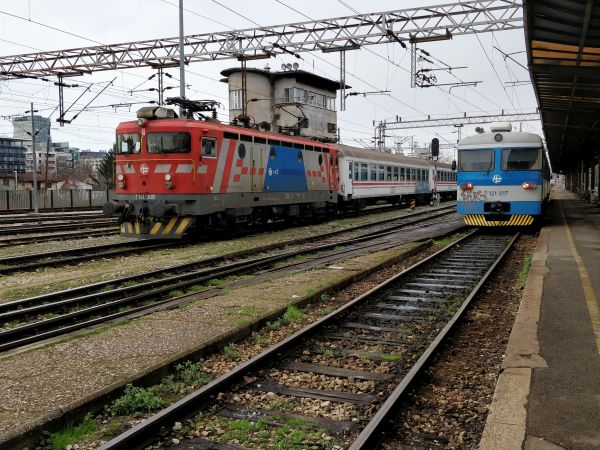
Croatian Railways electric locomotive of the class 1141 and diesel multiple unit of the class 7121. Class 1141 was originally Yugoslav
Railways class 441. It is a design by the Swedish company ABB. A large group of companies built these 1968-87 (ASEA, ELIN (de),
SAAS Sécheron, SGP/Simmering-Graz-Pauker) (1968-1970) Končar Group, TŽV Janko Gredelj, Đuro Đaković, MIN Niš (1970-1987)
UCM Reșița, Electroputere Craiova (Romanian models only, 1973-1984). These machines are in use in all ex-Yugoslavian countries.
HŽ series 7121 is a diesel multiple unit. It is a two coach unit intended for short distance commuter traffic. The design is from Spain
but the trains were built by the company Đuro Đaković 1981-86. These are the same trains which in Serbia are called class 712.
Picture from Zagreb 31.3.2018 by Markku Salo.
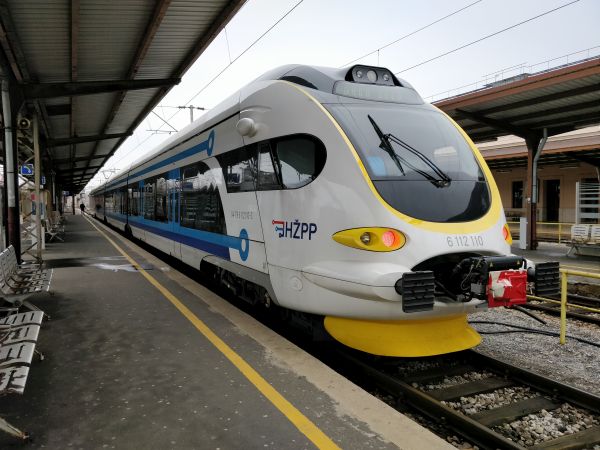
Still one more picture of the class 6112.
Picture from Zagreb 1.4.2018 by Markku Salo.
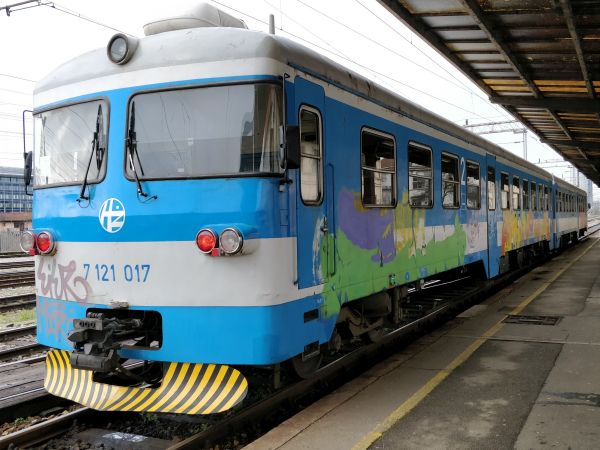
A closer look at a class 7121 diesel multiple unit, see also in the picture further above.
Picture from Zagreb 31.3.2018 by Markku Salo.
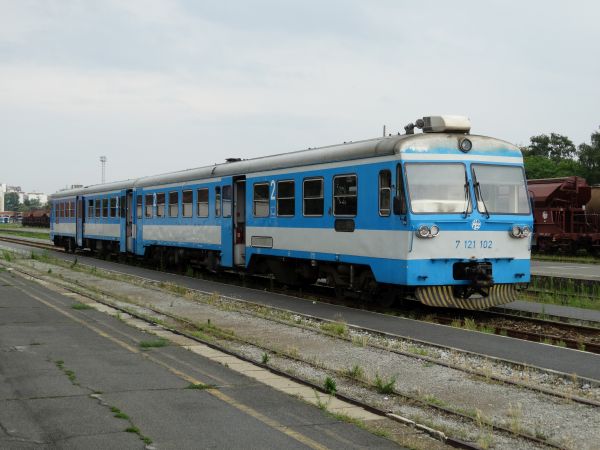
Another class 7121 railbus, but note how this one from a newer series (7121.1xx) differs from the older one above: The windscreen
is no more curvy at the sides and the whole front is more of a square structure. This is a (lately) non-modernised unit. Many of these
have been replaced by the Swedish 7122 railbuses shown in pictures below, but there are not enough of the Swedes to get completely rid
of these ones so a second rehaul has been deemed necessary. These machines are even used on some long distance lines, for example some
over 4 hour rides to Osijek in the east of the country.
This one was built by the company Đuro Đaković in 1984 and fitted with MAN diesel engines built as license copies (MAGOSA-MAN) and
once reconstructed in 1998. But many of its kind have recently undegone a second major rehaul - this one has not.
Picture from Osijek 7.7.2018 by Ilkka Siissalo.
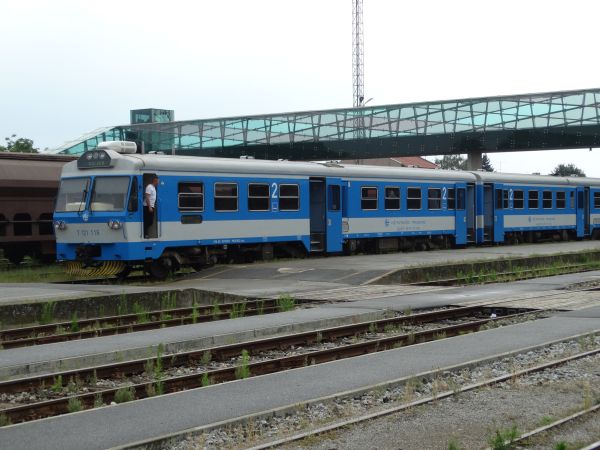
A similar class 7121 railbus, but one that has recently been rehauled. This is also of the newer 7121.1xx series. Note the new digital
train destination sign on top of the windscreen. There are also new airconditioning machines for the drivers - but not for the customers.
Chairs are new and the inside looks like that of a completely new train. This one came to Osijek from a really long ride from Zagreb
officially as an InterCity train.
Picture from Osijek 7.7.2018 by Ilkka Siissalo.
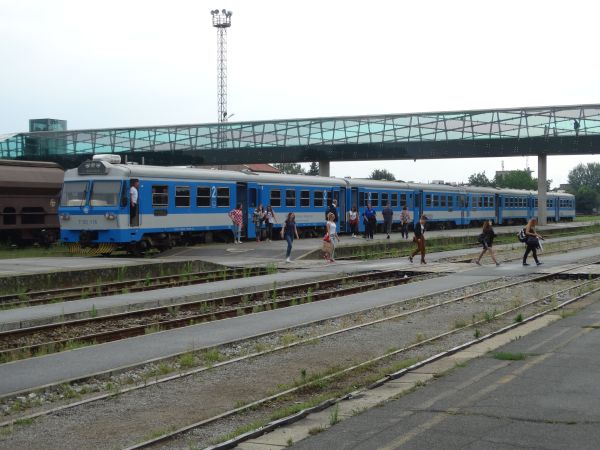
Same train as in the picture above: An InterCity from Zagreb has just arrived to Osijek. The only passengers seem to be student-age
young ladies. The next similar train which arrived exactly two hours later had ZERO passengers - very probably while Croatia was exactly at
that time playing in the semi finals of football championship. Well... Croatia won :-)
Picture from Osijek 7.7.2018 by Ilkka Siissalo.

Croatian Railways passenger traffic division HŽPP class 6111 electric multiple unit. These three coach trains were formerly
Yugoslavian Railways class 411. They were built by Ganz Mavag in Hungary in 1977. Today they are only used in the Zagreb city
commuter traffic.
Picture from Zagreb 31.3.2018 by Markku Salo.
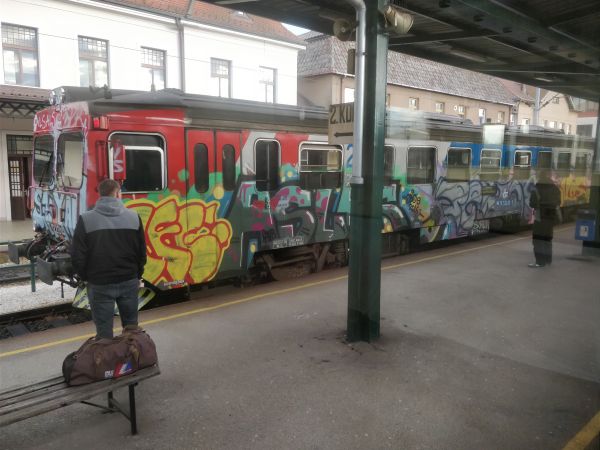
Croatian Railways class 7122 railbuses are former Swedish class Y1 trains. The class Y1 was an Italian design by Fiat, which
got a better chassis designed by the Swedes. They were lousy machines as long as they had their original Fiat engines, but the
Swedes soon installed new Volvo truck engines into them, creating thus reliable and good trains. Since 1996 Swedish SJ has been
sending altogether 35 used Y1 railbuses not only to Croatia, but also other ex-Yugoslavian countries. Croatian railways uses
them on less important side lines. Only a handful of Y1s are left in Sweden nowadays.
Picture from Zagreb 31.3.2018 by Markku Salo.
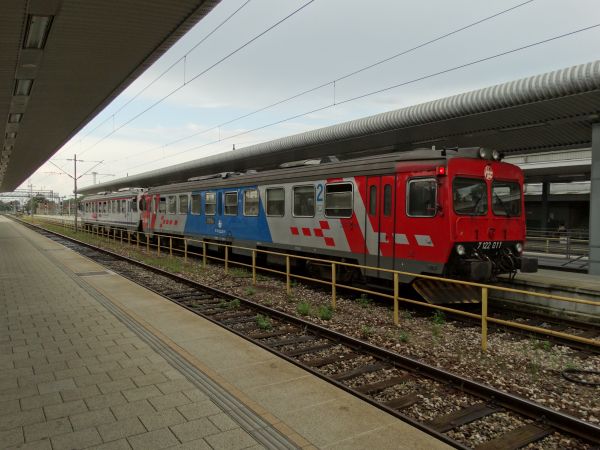
Two more of the former Swedish class Y1 railbuses, now Croatian class 7122. The painting scheme with read head parts and blue in the middle
is the newest of Croatian railways. Its also nice to see that maybe the worst graffiti problems are fading away (?). At least far from
the capital city only a few trains are badly smeared in the summer of 2018.
Picture from Vinkovci station 8.7.2018 by Ilkka Siissalo.
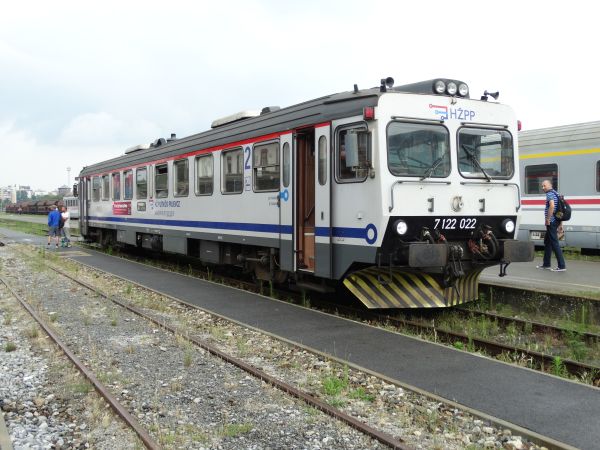
One more of the class 7122 railbuses, former Swedish Y1. Judging by its colours, this one has probably earlier been used by Veolia/Transdev
in Sweden and it has merely just received a couple of sticker bands as an extra.
Picture from Osijek station 7.7.2018 By Ilkka Siissalo.
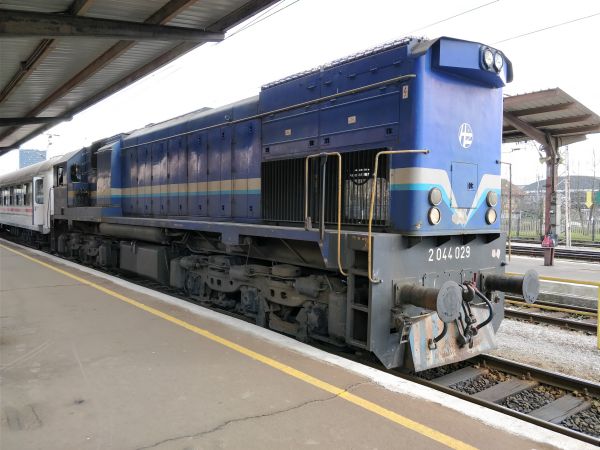
These are American locomotives of the EMD (Electro-Motive Division of General Electric) type GT22HW-2, built under license
by Đuro Đaković for Yugoslavia. They used to be called Yugoslavian Railways class 645. It weighs 97,5 tons, produces 1740 kW
of power and has a top speed of 124 km/h. Its nickname is "Karavela", Caravelle or "Kennedy". There are four distinct subtypes of
these locomotives in Croatia and this type 2044 is a bit newer, from 1981 and is used mainly for passenger trains.
Picture from Zagreb 31.3.2018 by Markku Salo.
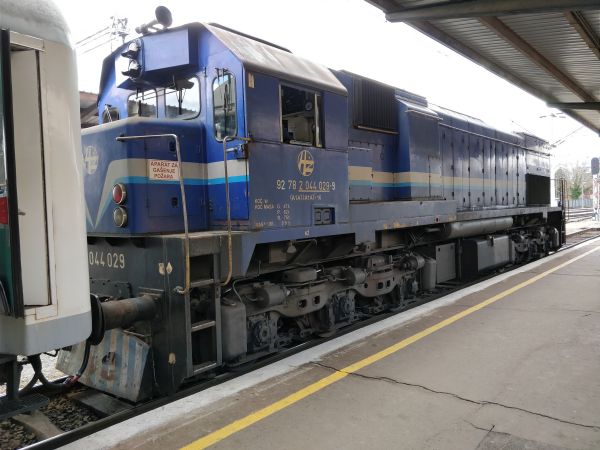
The same class 2044 "Karavela" seen from the other side.
Picture from Zagreb 31.3.2018 by Markku Salo.

Another class 2044 "Kennedy" or "Karavela". This is an EMD GT22HW-2 with a power rating of 1740 kW. It's a six axle machine weighing
a massive 97,5 tons. Top speed is 124 km/h. These were built in 1981-84.
Picture from Osijek station 7.7.2018 by Ilkka Siissalo.
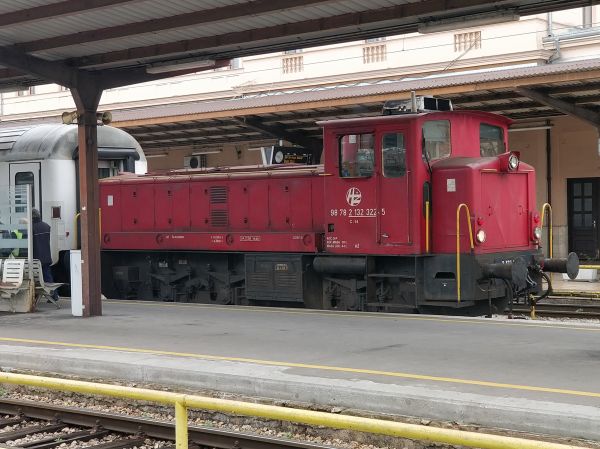
HŽ's diesel shunter locomotive of the class 2132. These were originally locomotives of the class 732, which is an Austrian design,
produced under licence of the Austrian Jenbacher Werke by the Đuro Đaković Works since 1969. These machines were thoroughly rebuilt
and got a new diesel engine as well as transmission. They were designed for light and heavy shunting. After rebuilding they were
reclassified as class 2132. The recostructions were made 1986-94. Now the machines have a power rating of 441 kW and a top speed
of 49 km/h. Their engines are 4 stroke French Pielstick machines.
Picture from Zagreb 31.3.2018 by Markku Salo.

Another view of HŽ's diesel shunter locomotive of the class 2132.
Picture from Zagreb 1.4.2018 by Markku Salo.

Another class 2132 performing shunting duties at the station of Čakovec.
Picture from Čakovec 1.7.2015 by Ilkka Siissalo.
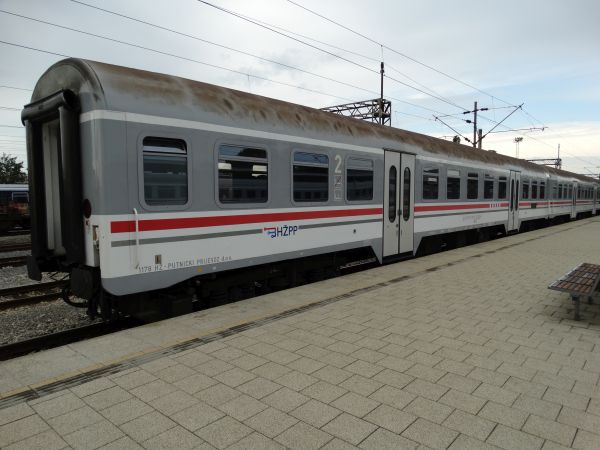
Modernised regional traffic coaches, although used here on a fairly long route in InterCity traffic. These coaches were leaving
Vinkovci for IC to Zagreb.
Picture from the station of Vinkovci 8.7.2018 by Ilkka Siissalo.
HŽ CARGO
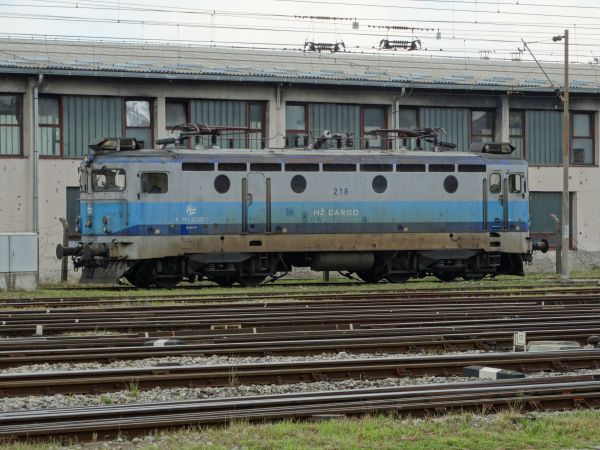
Like in most other EU countries too, the cargo part of state railways has been separated from Croatian state railways. Croatian state
cargo railways is now a company of its own, called HŽ CARGO. This is a HŽ Cargo electric locomotive of the class 1141.
Picture from the station of Vinkovci 8.7.2018 by Ilkka Siissalo.
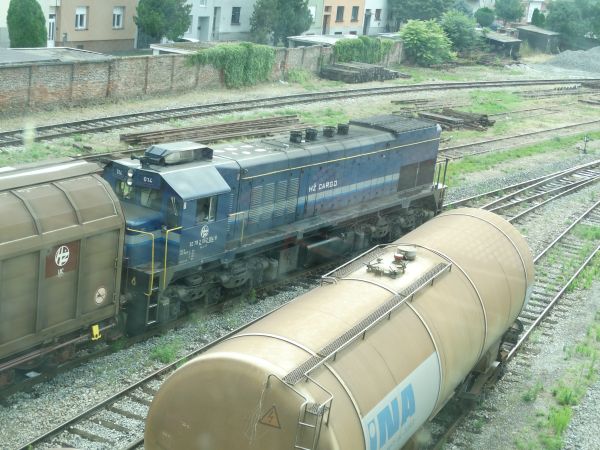
Another "Kennedy" or "Karavela", but of the class 2062. These locomotives - when compared with the almost similar class 2044 pictured
above - are older. These are from the years 1972-73. These are EMD G26 machines. Power rating is 1640 kW and top speed is 124 km/h.
The machines weigh 103 tons and they are mainly used for cargo traffic.
Picture from Osijek station 7.7.2018 by Ilkka Siissalo.
Private operators
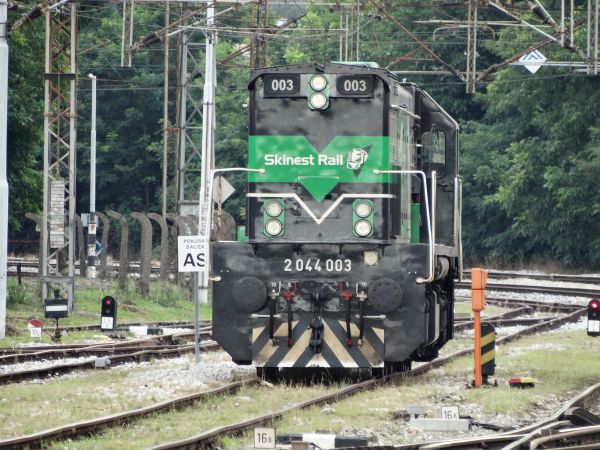
Another EDM "Karavela" or "Kennedy" of the class 2044 (see above), but this one is in private use. It is being run by the company
Skinest Rail, which is active in many former Soviet Union countries among others, but here this machine is operating on behalf of
Enna PPD Trans, which was formerly known as Adria Transportation. It has been for a long time active in cargo traffic between Austria
and Slovenia, but now it has expanded to Croatia and even to Bosnia-Herzegovina.
Picture from the station of Vinkovci 8.7.2018 by Ilkka Siissalo.

The same "Enna-Kennedy" seen from its side. This is an American EMD machine but licence built in that time Yugoslavia in 1981.
Picture from the station of Vinkovci 8.7.2018 by Ilkka Siissalo.
Trams of Osijek
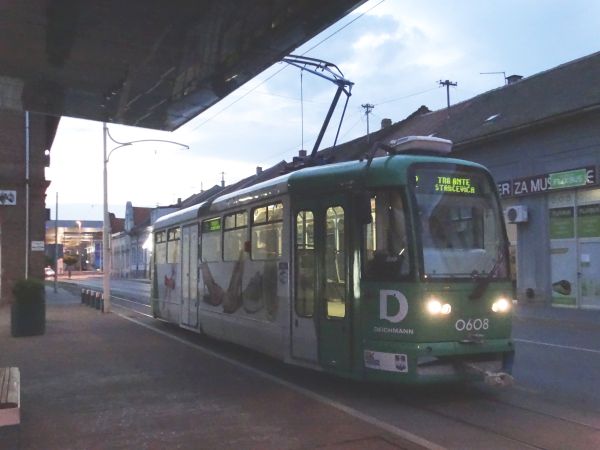
The City of Osijek in eastern Croatia, the capital of Slavonia, has a small tram network of three lines, in total 12 km. Most of the trams
are like this. They look like all new, but actually they are old Tatra T3 trams from early 1960s, but modernised so that they are
comfortable. There are also some old Düwag trams imported used from Germany, but they are normally not used. These modernised trams are
called Tatra T3PVO. This night time picture is taken at the tram stop of Osijek main railway station late at night of 8.7.2018. This line
no.2 reaching the station is popularly called "Kolodvorac" or "station runner".
Picture from Osijek station 8.7.2018 by Ilkka Siissalo.
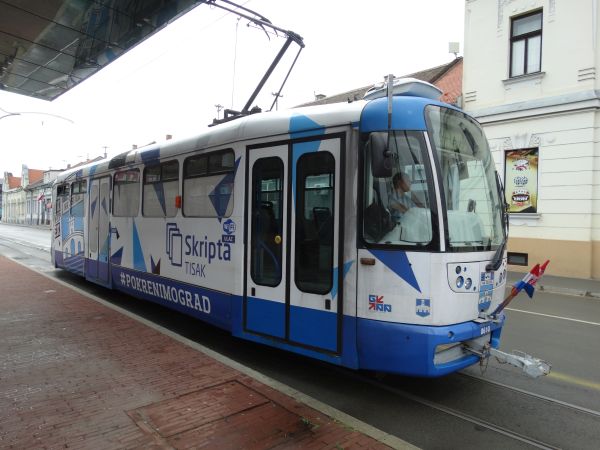
Another similar T3PVO at the same tram stop, but on the day before. Almost all of Osijek's trams are totally covered by ugly advertisement
tapings. We saw on a two-day trip only once a tram in "normal" blue and white colours. Note the Croatian flags at the front of the tram. This
was the day when Croatia played against Russia in the football world championship league's semi-finals - and won. Whole Croatia went crazy!
Picture from Osijek station 7.7.2018 by Ilkka Siissalo.

